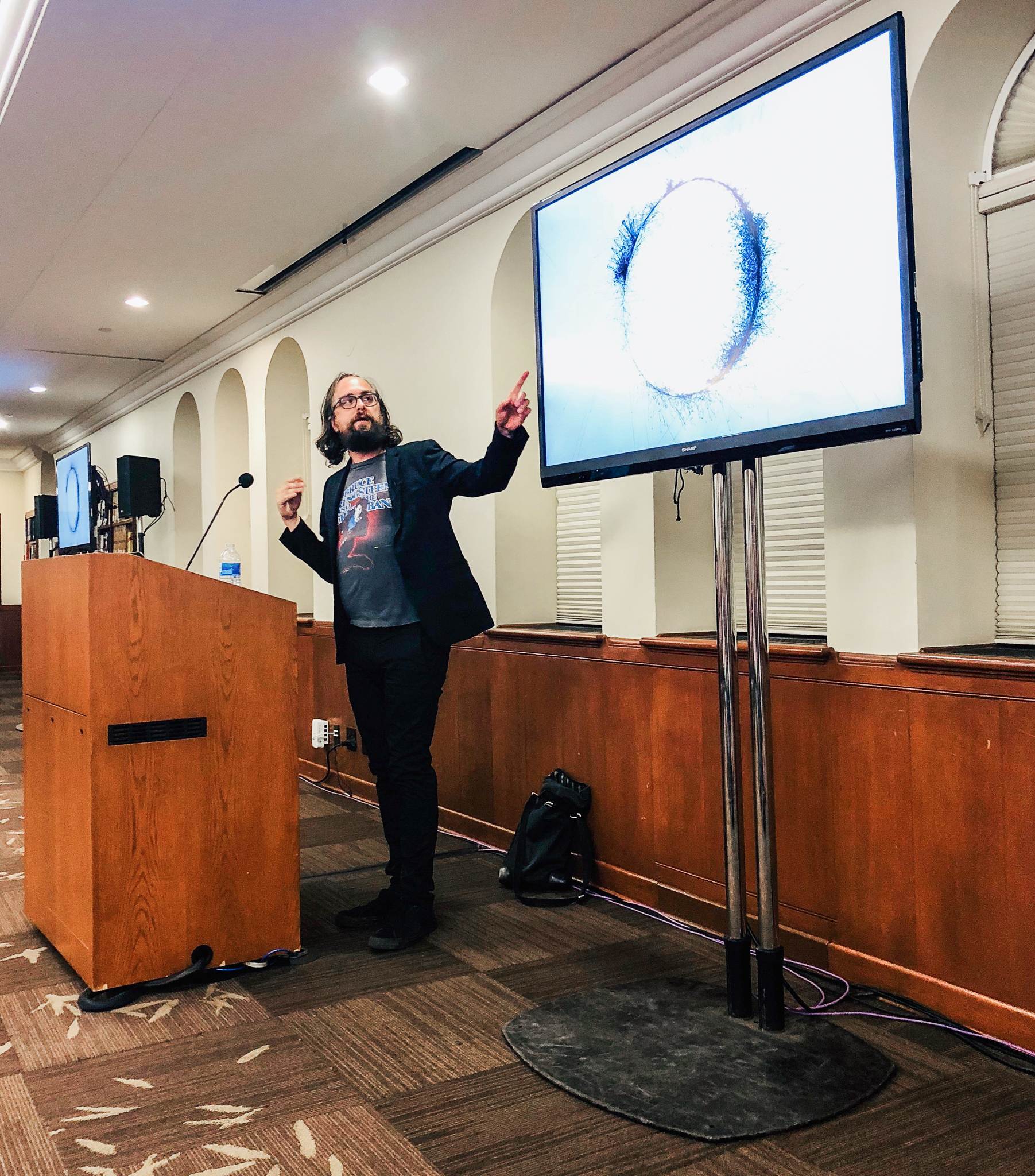Data artist Jer Thorp redefines data

New York-based data artist Jer Thorp explored how people live in an increasingly complex world of data. His lecture touched on his art insallation, which fought the rise of xenophobia in New York. (Eleanor Kim | Daily Trojan)
In the wake of data-driven scandals, including those involving Cambridge Analytica and Facebook, the conversation surrounding ownership of data has either been increasingly negative or indifferent. But whichever direction the conversation heads, the world is undeniably full of data.
On Tuesday evening, Jer Thorp, a New York-based data artist and the Innovator in Residence at the Library of Congress, spoke to students and faculty about shifting the current definition of data to enact social change.
Thorp’s talk encompassed the question: “What is it like to live in data?” He initiated the conversation by laying out the bleak reality of humanity’s current relationship with data, emphasizing the power dynamic between the controller of the data and the data’s subject. Specifically, Thorp referred to the lack of transparency and control users have over their own information.
“[What is it like to live in data?] It sucks. To be used. To be without agency,” Thorp said. “We forget how easy it is for advertisers to glean these pieces of meaning. We also get a sense of what we’re missing by not being able to glean this meaning from our data. We produce these records but we are not allowed to look at them.”
According to Thorp, the last defining factor of the modern data climate is its complexity. When data is complex, it limits the scope of who can control and understand it. Keeping the data complex deepens the divide between the winners and losers of this exchange.
“The ways that we have come up with to communicate are very exclusive,” Thorp said. “They tend to be in a very singular language, usually a language that was born from the physical sciences and math and economics. So what do we do about this? What do we do with being overwhelmed with complexity?”
The answer lies in Thorp’s own projects. He walked the audience through personal data visualization projects designed to present data in a way that the general public could understand.
In 2017, Thorp showcased his project, “We Were Strangers Once Too.” Inspired by former president Barack Obama’s speech on immigration, Thorp created an installation designed to combat the rise in nationalism and xenophobia. The installation featured 33 poles each inscribed with the home country of New York City’s immigrant population. To do so, he placed the installation right in the heart of New York City’s Times Square. When viewers took a step back, the different colors on the poles formed a heart.
“People ‘selfie-d’ in front of it, but they ‘selfie-d’ in front of where their grandmother was from or where their brother played soccer,” Thorp said. “It forces people to understand that there are webs in their lives that are connected to all these countries. We also had people get married in front of it. I love that.”
Thorp’s projects range from visualizing hotel data to the titles of art pieces. The last piece Thorp highlighted was the St. Louis map room. Wanting to reimagine a map room’s association with institutional power, Thorp and his team transformed a St. Louis high school gymnasium into a place where groups could come and author maps of their own communities. The groups’ maps would be overlayed with public civic maps in hopes of offering a new perspective on their community.
Through this, obsolete practices such as redlining, a strategy used to disenfranchise black communities from real estate, become relevant again. Thorp highlighted a specific group of ninth graders who created a map of “safe spaces” in their neighborhood. By overlaying their map with a public redlining map from the 1930s, students saw how redlining districts aligned with the well-being of certain communities even today.
“The idea that 80 years later this map was still showing itself in their neighborhood changed the way that they thought about their lives,” Thorp said. “In fact, they went back afterward and made this project about the redlining maps and how they reflected themselves on the [current] neighborhood.”
Thorp ended the talk by answering his original question, painting a brighter future of the potential of data. According to the artist, data is not an abstract concept that only statisticians and experts can understand, but rather is a tool for storytelling. Thorp argued that this comes with putting data in public spaces and thinking about the individuals behind the numbers.
“A new way [of approaching data] is about data well-being,” Thorp said. “How can we structure our approaches to data such that well-being is at the core of it?”
